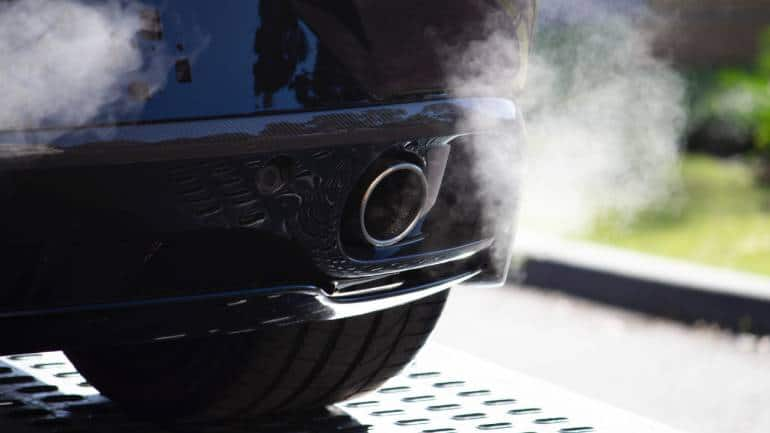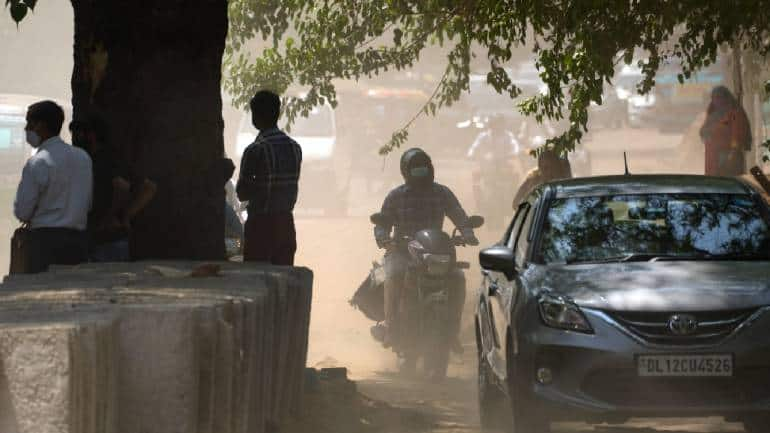



Along with the extreme heat and the lack of rain in the past three months, Delhi-NCR and its surrounding regions are grappling with another rising problem, albeit a silent one — summer pollution.
Though of lower magnitude compared to winter—when air quality breaches all emergency levels and sends the government machinery into a war-time frenzy—summer pollution is slowly spreading its tentacles and has to be controlled before it gets out of hand, experts say.
Summertime pollutants include wind-blown dust, fossil and dirty fuels, vehicular emission, industrial activities, construction dust, ground-level ozone and biomass burning. There’s a little bit of farm fires as well, though not on the scale seen in the winter months.
A rising threatCentral Pollution Control Board (CPCB) air quality index (AQI) data shows that from March 1 to June 13 this year, Delhi had 77 ‘poor’, 23 ‘moderate’, four ‘very poor’ and one ‘satisfactory’ air quality days.
In comparison, 36 ‘poor’, 50 ‘moderate’, four ‘very poor’ and seven ‘satisfactory’ air quality days were recorded during the same period last year.
Another report said air quality in May this year was the poorest for the month in the last three years. May had 21 days of ‘poor’ air quality in 2022 compared to three in 2021 and just two in 2020.
To be sure, air pollution dropped drastically in the Capital during the pandemic months - especially when full lockdowns were in force in 2020-21. This was because of restrictions on industrial and construction work as well as travel.
An AQI of 51-100 is considered ‘satisfactory’, 101-200 ‘moderate’, 201-300 ‘poor’, 301-400 ‘very poor’, and anything above 401 as ‘severe’.
“This summer, Delhi has been in the pincer grip of high particulate pollution as well as increased levels of toxic ozone,” Anumita Roychowdhury, executive director of Centre for Science and Environment (CSE), told this writer. Summer conditions also trigger ozone formation, she explained.
According to CSE’s analysis, ground-level ozone pollution has increased this summer compared to previous summers in Delhi-NCR.
Significant increase has also been noted in PM2.5 (tiny particulate matter) and NO2 (nitrogen oxide, from burning fuels) levels. Compared to the summer of 2020, NO2 is up by 61 percent and PM2.5 by 76 percent, the analysis says.
“Air pollution levels in summers are mostly in the poor category and beyond the prescribed NAAQS and much above WHO safe guideline levels,” says Sunil Dahiya, analyst at the Centre for Research on Energy and Clean Air.
Both Dahiya and Simi Mehta, CEO and editorial director of Impact and Policy Research Institute (IMPRI), pin the blame primarily on fossil fuel in the transport sector, power stations and industries that operate round the year, apart from forest fires, biomass burning, dry dust resuspension and dust storms.
“No effective pollution control devices are installed at industries and power stations. Transportation is skewed towards the private mode, resulting in high fossil oil consumption and emission of air pollutants,” Dahiya says.
 (Image: Matt Boitor via Unsplash)Dust in the wind
(Image: Matt Boitor via Unsplash)Dust in the windOne major source of summer pollution is widespread windblown dust, which Delhi-NCR region gets from Rajasthan and other places where land degradation is a major issue. This summer, the problem has been aggravated by the lack of rain, which acts as a natural cleanser.
Existing source assessment studies, CSE's Roychowdhury says, show that the influence of dust can be as high as 30 percent during summer—double of that in winter.
A ravaging heatwave has scorched north-west and other parts of India from mid-March, with temperatures reaching up to 49 degrees Celsius in some pockets of Delhi. Barring a few days in May, rain has largely eluded the region, aggravating the pollution levels.
“This has been one of the driest and hottest summers. It elevated the dust levels, compounding local pollution from combustion sources. The icing was the raging landfill fires,” she says.
Roychowdhury was referring to the Ghazipur and Bhalaswa landfills that caught fire multiple times this year. Extreme heat caused self-combustible gases present in the landfills to ignite, leading to a cloud of toxic smoke.
Desertification and land degradation are the main causes of high dust in the air, explains environment expert Chandra Bhushan, the CEO of the International Forum for Environment, Sustainability & Technology. “Dust levels are quite high this time of the year, and one of the key causes of summertime pollution. We should also remember that we are not far from the Thar desert.”
Groundwater depletion leads to absence of moisture in the soil and causes land degradation, Bhushan explains. “Monoculture cultivation is another cause behind soil degradation. We have to find solutions to these issues.”
 The heatwave in June made things worse. (Image: AP)Toxic ozone spreads
The heatwave in June made things worse. (Image: AP)Toxic ozone spreadsThe extreme heat is causing ground-level ozone to spread much faster not only in Delhi-NCR but other metros such as Mumbai, Kolkata, Hyderabad, Chennai and Bangalore as well, the CSE analysis says.
Ozone is a highly reactive gas created when other gases present in the air chemically react under the influence of sunlight.
In Delhi-NCR, a 33 percent rise in ground-level ozone was recorded this summer over 2021. The geographical spread of ozone in the region during March-April was highest in the past four years.
CSE studied publicly available granular real-time data from CPCB’s Central Control Room for Air Quality Management portal.
Despite the warning signs, this problem has not attracted adequate policy or public attention for mitigation and prevention, says Roychowdhury, warning that it can blow up as a serious health crisis in the coming years.
“The unprecedented spread of ozone in the past few months threatens public health, with respiratory diseases topping the list,” agrees IMPRI's Mehta.
If unchecked, the highly reactive gas will have serious health consequences, especially on children with premature lungs and the elderly, she cautions.
Experts say ozone can inflame and damage airways, make lungs susceptible to infection, aggravate asthma, emphysema, and chronic bronchitis and increase the frequency of asthma attacks, leading to increased hospitalisation.
“Ozone mitigation demands strict control of gases from all combustion sources, including vehicles, industry, power plants and open burning,” Mehta says.
Dahiya also feels ground-level ozone is cause of concern, and a build-up in the pollutant is seen in various geographies in India as well as outside the country.
Summer action planThough most efforts to tackle air quality generally remain concentrated to winter, steps have been taken in recent times to address summer pollution.
This month, the Commission for Air Quality Management in the National Capital Region and Adjoining Areas announced a ban on the use of coal for industrial, domestic and other purposes in Delhi-NCR from January 1, 2023. In areas where piped natural gas is available, the ban will be enforced from October 1.
In May, the Graded Response Action Plan sub-committee asked the Delhi-NCR administrations to intensify and enforce dust control measures.
The Delhi government on its part launched a 14-point summer action plan in April, which started with month-long campaigns against the open burning of waste and garbage and an initiative to control dust pollution.
The other points include roadside green cover, rejuvenation of water bodies, developing city forests and eco-waste parks, monitoring tree transplantation, phasing out single-use plastic, promoting urban farming, studies on causes of pollution in real-time, checking industrial pollution, etc.
Experts say these are steps in the right direction, though much more needs to be done throughout the year.
“The summer pollution action plan was for a month. Though the government banned open fires and launched anti-dust campaigns as immediate action, the AQI levels continued to remain poor,” Mehta says.
Crafting a seasonal pollution action plan, Mehta says, does not make much sense. Such plans should be part of a policy having seasonal components, she explains, adding the remaining 12 items though general are significant.
“The Delhi government should develop its capacity to check pollution within its territory and so should the neighbouring states,” Mehta says.
 A ban on the use of coal for industrial, domestic and other purposes in Delhi-NCR will come into effect from January 1, 2023. (Image: AFP)A health risk
A ban on the use of coal for industrial, domestic and other purposes in Delhi-NCR will come into effect from January 1, 2023. (Image: AFP)A health riskAir pollution has become a major issue in India, especially in Delhi-NCR and the northern plains. In winter, it breaches unmanageable levels because of adverse meteorological conditions, farm fires and slow wind speed, in addition to other factors present in summers.
Recent studies show that air pollution is spreading its tentacles in Kashmir, the North-east, and the southern states, presumed to have cleaner air.
Area pollution is a major health hazard, too. The ultra-fine inhalable PM2.5 pollutants are capable of infiltrating the bloodstream through the respiratory system and can cause asthma, lung cancer, heart diseases and other ailments.
More than 6.6 million people died globally due to air pollution in 2019, a Lancet study says. India’s share of such deaths was highest at 1.67 million.
The Energy Policy Institute at the University of Chicago's Air Quality Life Index released this month says air pollution is the greatest threat to human health in India and reduces life expectancy by five years. Globally, air pollution takes 2.2 years off each person's life.
 Fire at the Ghazipur garbage dump in March 2022. (Image: AP)Need integrated approach
Fire at the Ghazipur garbage dump in March 2022. (Image: AP)Need integrated approachAccording to Dahiya, any action plan to reduce pollution in Delhi and northern India should take into account regional sources of pollution and emission and adopt a load reduction-based approach.
“Even if all activities stop within Delhi’s boundary, it will be very difficult to achieve WHO safe limits or breathable air quality as it is a land-locked city,” Dahiya said.
This multi-pollutant crisis cannot be curbed only with reactive seasonal action, Roychowdhury says. Combating dust, for example, requires massive greening effort and protection of the Aravallis and forests.
Controlling emissions from combustion sources requires clean fuels in all sectors, rapid electrification of vehicles, restraining vehicle usage, and integrated public transport services, etc., Roychowdhury says.
Hundred percent segregation and recycling of waste with no fresh dumping in landfills are other measures, she says.
Bhushan agrees that air pollution is not a single sectorial issue and requires massive cross-sectorial measures round the year.
Standalone solutions won’t help, Bhushan says. For example, solving automobile emissions alone or shutting thermal plants alone won’t stop pollution. “We will have to address all issues together.”
Engaging in blame games to cover up one’s shortcomings or inaction ultimately hurts the common people, Mehta cautions, referring to inter-state tussles over pollution. “The time to deal with pollution is now, and on a war footing. The code red for humanity is already out.”
Discover the latest Business News, Sensex, and Nifty updates. Obtain Personal Finance insights, tax queries, and expert opinions on Moneycontrol or download the Moneycontrol App to stay updated!
Find the best of Al News in one place, specially curated for you every weekend.
Stay on top of the latest tech trends and biggest startup news.